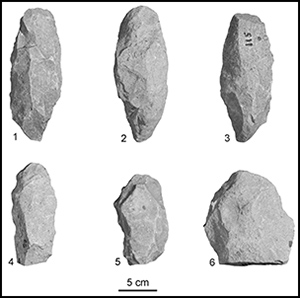Article contents
Trade me an axe? Interpretive challenges of the distribution and provenance of Neolithic basaltic bifacial tools in Israel
Published online by Cambridge University Press: 17 February 2016
Abstract

The discovery of a Neolithic quarry and production site for basanite bifacial tools at Giv‘at Kipod in Israel has provided new insights into these socially significant artefacts. Geochemical analysis of material from the quarry distinguishes it from other basaltic rock sources in Israel, allowing stone tools from a variety of sites and dated contexts to be assigned a provenance. Results suggest that Giv‘at Kipod was an important production centre for over several millennia. It operated primarily on a local, regional level and independently of the parallel manufacture-and-distribution mechanisms of flint bifacials. While flint tools developed in response to the practical requirements of the transition to agriculture in the region, ground-stone bifacials appear to have been a product of economic changes and evolving social structures.
- Type
- Research
- Information
- Copyright
- Copyright © Antiquity Publications Ltd, 2016
References
- 6
- Cited by




